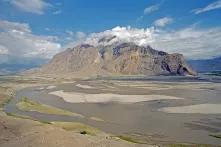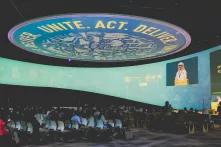Resource Equity Dialog
The resource equity dialog held in Quetta, Balochistan on 21st April 2016, highlighted the issues around resource equity and development projects. The key question raised by the academia, civil society and researchers present at the dialog.

The key question raised by the academia, civil society and researchers present at the dialog included the following;
- The proposed ‘western route’ for China Pakistan Economic Corridor’s (CPEC) needs a focused critical enquiry to find out expected benefits and the ecological costs?
- Is there a resource map of Balochistan where area-based variation in social and ecological conditions is shown?
- Can social institutions for peace and conflict resolution be revived for resource based conflict resolution?
- Who might be the representative stakeholders to negotiate the benefits and costs of mega-projects?
The Group Aspirations:
- Finding a common cause to protect social and ecological resources is done through revived social institutions such as hasher, Jirga and other traditional conflict resolution arrangements, as well as new institutions that protect rights and create awareness. Pre-partition psyche of ownership of resources should be transformed into more democratic and fair sense of widely shared resources.
- A comprehensive and widely accepted resource and disaster mapping of the province is developed which helps organizations working on these issues to come on the same page.
- The freshwater crisis is widely understood and low water conservation methods are implemented or traditional methods renewed widely in rural and urban areas.
- Peace-building and education efforts together with gender rights are much more centre stage in government efforts and investments in Balochistan.
- The CPEC project is to bring economic growth with more employment, industrial boost, across border trade opportunities and tourism. Money should be spent on human development rather than infrastructure such as water management and supply, health, education, etc.
- The poor management and unequal distribution of resources among, men and women, various ethnicities and the scattered population should be overcome under CPEC. It is an opportunity to overcome disparities by way of social inclusion policy.
- The project should be considered as an opportunity to improve governance such as coordination between federal and provincial governments and increased cooperation. Larger provincial benefits could be extracted from agreements between the centre and the province.


